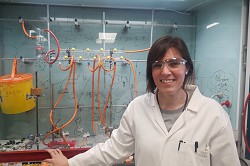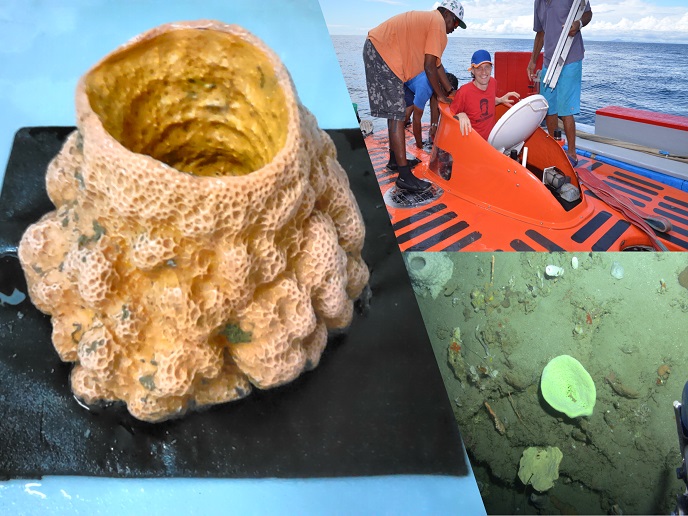Tracking the molecular activity of natural products, while also engineering new versions
Chemists sometimes refer to compounds and substances produced by living organisms as Natural Products (NPs). Understanding how these NPs are organically produced allows for their biosynthetic manipulation and modification. These processes are crucial for medical advances, as they are key for pharmaceutical development. C-XAQ set out to contribute to these efforts, particularly focusing on using halogens as a tag within these molecules. The researchers have shown that the introduction of a halogen can be achieved by manipulating the natural assembly of these molecules. Once introduced, the halogen acts as a reactive handle that can be modified. Using new, mild, aqueous and selective cross-coupling chemical procedures, the team were able to selectively diversify organic molecules enabling quick access to a diverse series of new to nature NPs. Designing the optimum conditions for modification Tryptophan is an amino acid that is critical to the biosynthesis of proteins in organisms, necessary to sustain life. As it is also implicated in many medicinally important NPs, it had been thought that manipulating its protein folding, fluorescence and bioactivity processes could yield significant insights for medical science. Yet, whilst there have been extensive studies of other aromatic amino acids, until the work of the Goss group(opens in new window) which led to the C-XAQ project, there had been no comparable studies on tryptophan. The C-XAQ project team developed chemistry enabling the replacement of a C-X (carbon halogen tag) with a diverse series of alternative chemistries. This has been carried out on X-tryptophan as well as on a ‘new to nature’ halogenated antibiotic, engineered from bacteria. As the project coordinator, Dr Rebecca Goss explains, ‘This kind of control lets us intercept, label and modify bioactive molecules as soon as they are produced by the cells, and has the potential to enable compound tracking and ultimately the modulation of biological properties.’ Additionally, to better understand the potential of the antibiotic, the Marie Curie Fellowship Researcher Dr Cristina Pubill-Ulldemolins, together with members of Goss’s ERC team, investigated the impact of water and air on the catalytic cycle, then assessed the effect on the growth media of the bacteria. The team also studied the toxicity effect of catalysts and reagents to the engineered bacterial cells which meant they were able to optimise catalytic conditions and new bacterial growth media was developed to promote antibiotic production while not compromising the catalysis. According to Dr Goss this was the most challenging part of the project. As she recalls, ‘It required us to develop media conditions compatible with living cells as well as suitable chemistry. We discovered the optimal methodology which supported the growth of the microorganisms, production of halogenated natural products without compromising the efficiency of Suzuki Miyaura cross-coupling chemistry.’ The team found that ingredients commonly used in bacterial growth media like glucose, amino acids and even glycerol, adversely affected the outcome of the cross-coupling chemistry. They innovated by replacing conventional components with alternatives that could sustain organism growth but not compromise catalytic activity, for instance with the use of nitrate salts as a nitrogen source. Benefiting therapeutic drug R&D The chemical procedures which C-XAQ fine-tuned have enabled the modification of sensitive NPs. Being able to do this in a living system ensures the turnover rate of molecules (metabolic flux) through the system, thus holding out the promise of continuous Natural Product generation, to which can be added any necessary therapeutic modification. The researchers are continuing to explore this methodology to track bioactive molecules within living systems. However, having developed chemistries for the modulation of halotryptophans, they are currently extending their research to improve the bioactivity and bioavailability of natural products with pharmaceutical potential. The team are also attempting to engineer the actual shape of medically relevant peptides, to optimise their bioactivity potential as novel therapeutics.







